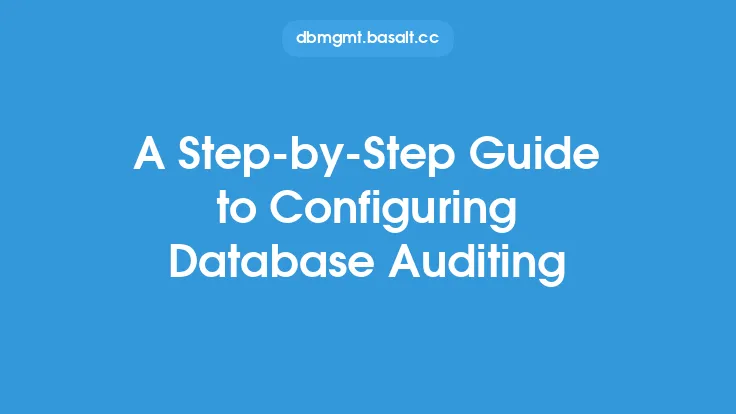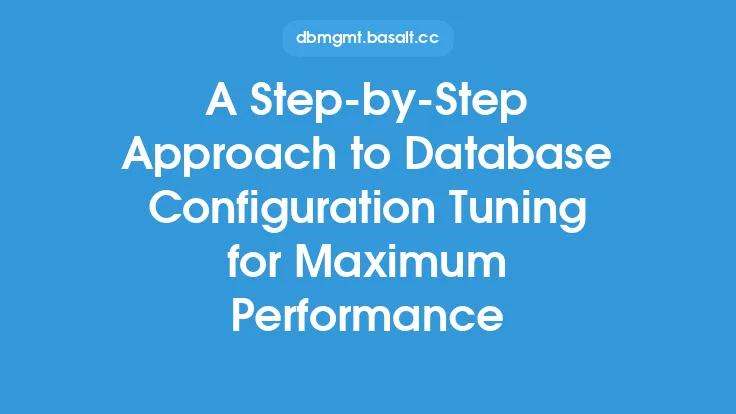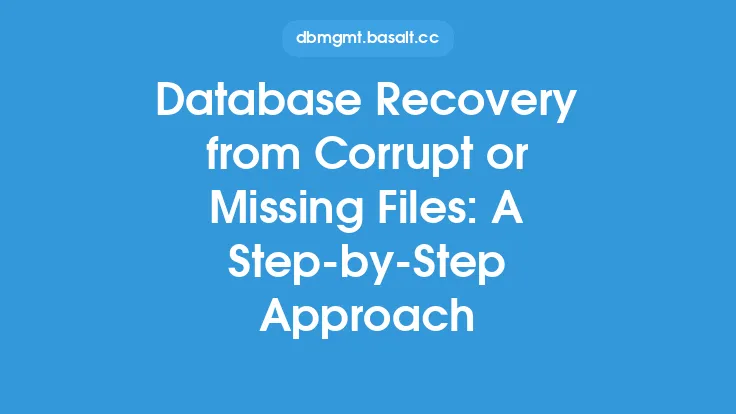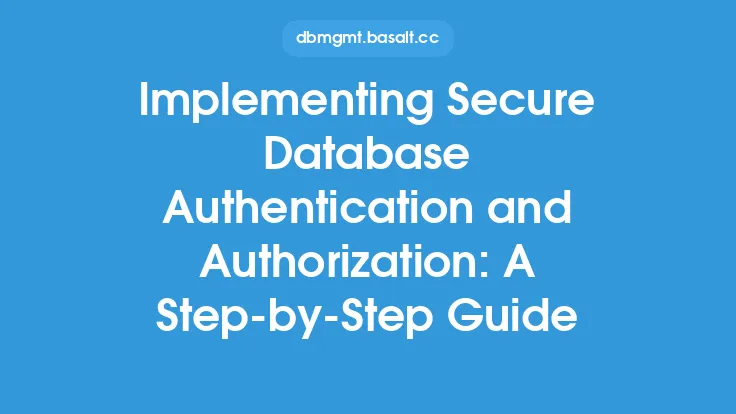Auditing database changes is a critical aspect of database security, as it allows organizations to track and monitor all changes made to their databases. This includes changes to database structures, such as the creation or modification of tables, indexes, and views, as well as changes to data, such as inserts, updates, and deletes. By auditing database changes, organizations can ensure the integrity and security of their data, detect and respond to potential security threats, and comply with regulatory requirements.
Introduction to Auditing Database Changes
Auditing database changes involves tracking and recording all changes made to a database, including changes to database structures and data. This can be done using a variety of tools and techniques, including database management system (DBMS) auditing features, third-party auditing tools, and manual auditing methods. The goal of auditing database changes is to provide a clear and accurate record of all changes made to the database, which can be used to detect and respond to security threats, troubleshoot database issues, and comply with regulatory requirements.
Step 1: Identify Audit Requirements
The first step in auditing database changes is to identify the audit requirements for the database. This includes determining what types of changes need to be audited, such as changes to database structures or data, and what level of detail is required for each type of change. Organizations should also consider regulatory requirements, such as those related to data privacy and security, and ensure that their auditing procedures comply with these requirements. Additionally, organizations should identify the stakeholders who will be responsible for reviewing and responding to audit data, and ensure that they have the necessary access and training to perform these tasks.
Step 2: Choose an Auditing Method
Once the audit requirements have been identified, the next step is to choose an auditing method. There are several options available, including DBMS auditing features, third-party auditing tools, and manual auditing methods. DBMS auditing features are built into the database management system and provide a range of auditing capabilities, including the ability to track changes to database structures and data. Third-party auditing tools provide more advanced auditing capabilities, including the ability to track changes in real-time and generate detailed reports. Manual auditing methods involve manually tracking and recording changes made to the database, which can be time-consuming and prone to error.
Step 3: Configure Auditing
After choosing an auditing method, the next step is to configure auditing. This involves setting up the auditing tool or feature to track the types of changes identified in the audit requirements. For example, if the audit requirements specify that all changes to database structures should be tracked, the auditing tool or feature should be configured to capture this information. Additionally, organizations should configure the auditing tool or feature to generate reports and alerts, which can be used to notify stakeholders of potential security threats or other issues.
Step 4: Monitor and Analyze Audit Data
Once auditing is configured, the next step is to monitor and analyze audit data. This involves regularly reviewing audit reports and logs to detect and respond to potential security threats, troubleshoot database issues, and ensure compliance with regulatory requirements. Organizations should also use audit data to identify trends and patterns, which can be used to improve database security and performance. For example, if audit data shows that a particular user or group is making frequent changes to sensitive data, additional security measures may be necessary to prevent unauthorized access.
Step 5: Respond to Audit Findings
The final step in auditing database changes is to respond to audit findings. This involves taking action to address potential security threats, troubleshoot database issues, and ensure compliance with regulatory requirements. For example, if audit data shows that a user has made unauthorized changes to sensitive data, the organization should take immediate action to prevent further unauthorized access and notify affected stakeholders. Additionally, organizations should use audit findings to improve database security and performance, such as by implementing additional security measures or optimizing database queries.
Best Practices for Auditing Database Changes
There are several best practices that organizations should follow when auditing database changes. These include:
- Implementing a comprehensive auditing strategy that tracks all changes to database structures and data
- Configuring auditing tools or features to generate detailed reports and alerts
- Regularly reviewing and analyzing audit data to detect and respond to potential security threats
- Using audit data to identify trends and patterns, and improve database security and performance
- Ensuring that all stakeholders have the necessary access and training to review and respond to audit data
- Continuously monitoring and evaluating the effectiveness of the auditing strategy, and making adjustments as needed.
Common Challenges and Limitations
There are several common challenges and limitations that organizations may encounter when auditing database changes. These include:
- Ensuring that auditing tools or features are properly configured and generating accurate and complete audit data
- Managing the volume and complexity of audit data, particularly in large and complex databases
- Ensuring that stakeholders have the necessary access and training to review and respond to audit data
- Balancing the need for comprehensive auditing with the potential impact on database performance
- Ensuring that auditing procedures comply with regulatory requirements, and that audit data is properly retained and protected.
Conclusion
Auditing database changes is a critical aspect of database security, as it allows organizations to track and monitor all changes made to their databases. By following a step-by-step approach to auditing database changes, organizations can ensure the integrity and security of their data, detect and respond to potential security threats, and comply with regulatory requirements. Additionally, by following best practices and being aware of common challenges and limitations, organizations can ensure that their auditing strategy is effective and efficient.





